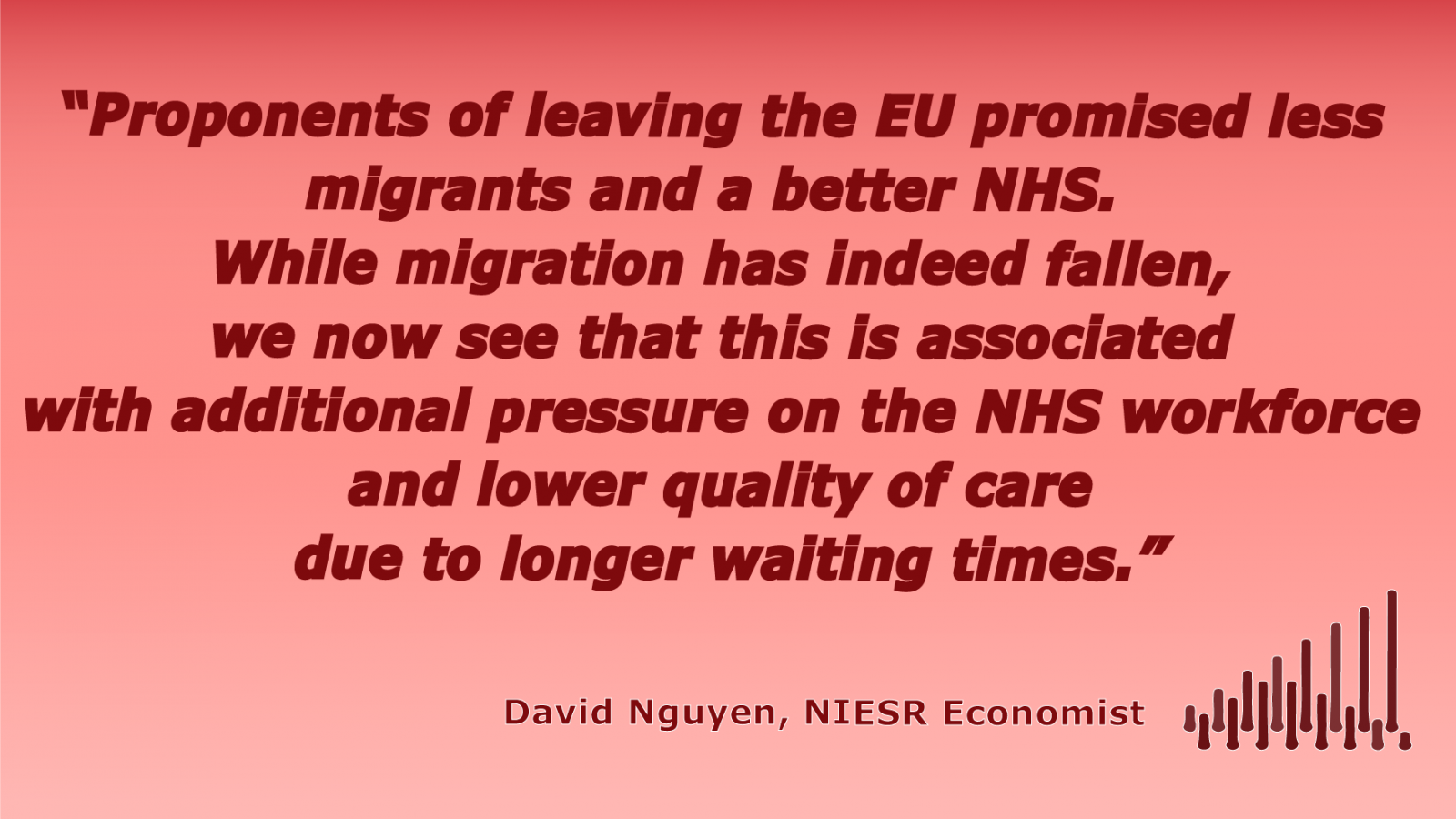Fewer migrants from the EU also means fewer nurses and doctors
Brexit is adding pressure to the already stretched health and social care workforce in the UK. One of the reasons is that the UK is seen as a less attractive place for current and prospective EU migrants. This is not just a perception. A new report by NIESR prepared for the Cavendish Coalition, shows that the Brexit Referendum has triggered an immediate reaction from EU healthcare professionals in terms of working in the UK: There are more leavers, and less joiners.

Brexit is adding pressure to the already stretched health and social care workforce in the UK. One of the reasons is that the UK is seen as a less attractive place for current and prospective EU migrants. This is not just a perception. A new report by NIESR prepared for the Cavendish Coalition, shows that the Brexit Referendum has triggered an immediate reaction from EU healthcare professionals in terms of working in the UK: There are more leavers, and less joiners.
To project workforce trends we compare the 12 month period before and after the Brexit Referendum. We find that in the NHS in England, the number of joiners from the EU has decreased by 12.3%, while the number of leavers increased by 18%.
These changes were particularly pronounced for nurses, with the number of joiners from the EU dropping by more than 30%. At the same time the number of nurses that are leaving increased by almost 25%, with Brexit being a key driver. According to our analysis also the number of EU doctors that are leaving is up, with 90% mentioning Brexit playing a part in the decision. We project that by the end of the transition period the NHS in England could be short of 5,000-10,000 nurses (in addition to current vacancies and increased demand!).
In this blog I examine three trends that, taken together, can have a significant negative impact on the future quality of care for patients in the UK: i) there is an uneven concentration of health (and social care) workers from the EU in terms of geography; ii) the same holds their propensity to work in specific job roles; and iii) an ageing population poses serious challenges to the healthcare workforce, in terms of demand as well as supply.
Geography matters
EU migrants working in the healthcare sector are employed in all parts of the UK. However, they are more concentrated in some countries and regions than others. This can make some places more vulnerable to supply issues if EU nationals decide to leave, or not come as before.
In the UK, around 9% of all registered doctors come from the EU. Based on NHS Digital figures we can show that they are more likely to work in England (9.3% of total) and Northern Ireland (8.8%), as opposed to Scotland (7.8%) and Wales (6.9%).In London alone there are close to 3,300 EU doctors working in the NHS.
For nurses in the NHS in England some of these contrasts appear to be even stronger. In some regions there are twice as many nurses from the EU than in others. While the average for England as a whole is 5.6%, their share is less than 2% in the North East but exceeds 11% in London. Similarly, more than half of all midwives in the NHS in England that come from the EU are working in London.
Specialisation matters
More than two-thirds of EU nationals in the NHS in England work in clinical roles, while the average for UK nationals is only around half. This does not mean that support roles (which include ambulance staff, technicians and assistants) are of less importance, but rather, that EU nationals are highly specialised. These patterns of specialisation and concentration are important as they highlight how some staff categories rely more on EU migration than others.
In principle there can be many reasons for this, though our qualitative findings suggest that EU nationals are more likely to work in specialities that are in short supply (e.g. due to targeted recruiting). This adds to the perception that they might be essential to avoid the occurrence of bottlenecks in the system. In extreme cases these can lead to a complete drop of certain speciality services. Our statistical analysis suggests that hospitals with a higher turnover of EU nationals at least exhibit longer waiting times.
Demographic trends matter
The life expectancy of the UK population continues to increase. Projections by the Office for National Statistics show that at some point between 2016 and 2026 the share of people aged 65 years and older will exceed those aged 16 or younger. As older people demand more healthcare services, this means that pressure on staffing and costs are likely to be sustained well into the future.
Lower levels of migration from the EU can exacerbate this in two ways. First, according to the Migration Advisory Committee, migrants from the EU tend to be younger and hence contribute more to the health service than they consume. Second, our report shows that EU nationals that work in the NHS in England are considerably younger on average. For example, while 18% of UK staff is below the age of 30, the comparable figure for EU nationals is 28%. The age gap increases to 40% versus 62% when looking at staff below the age of 40. This is suggestive since a large share of EU nationals is far from the age of retirement.
Proponents of leaving the EU promised less migrants and a better NHS. While migration has indeed fallen, we now see that this is associated with additional pressure on the NHS workforce and lower quality of care due to longer waiting times.
Training more staff domestically is part of the solution but we need to be realistic about the time it will take. It is paramount that in the interest of patient care, the health and social care sector continues to have the ability to secure the skills it needs from Europe and beyond.














